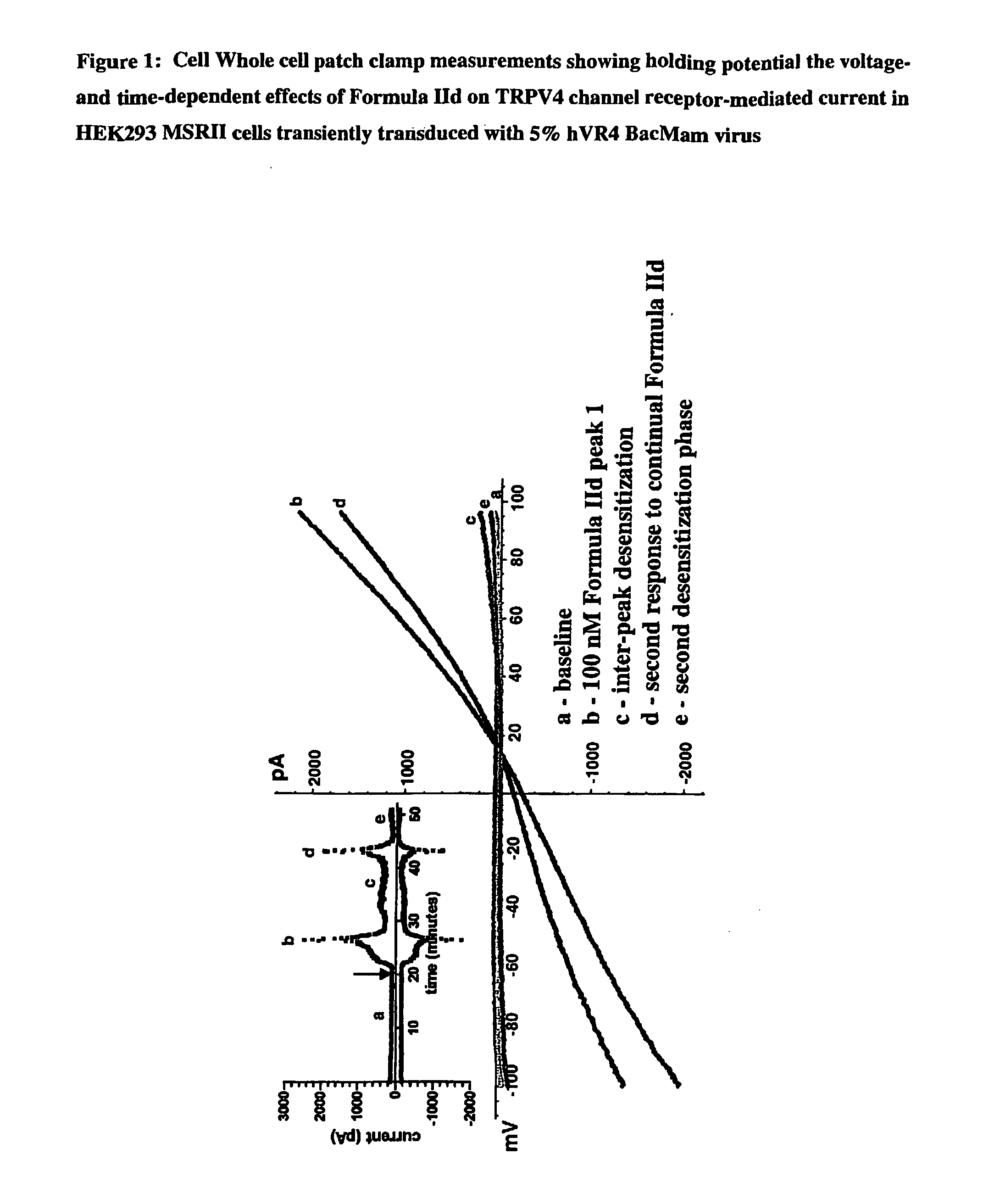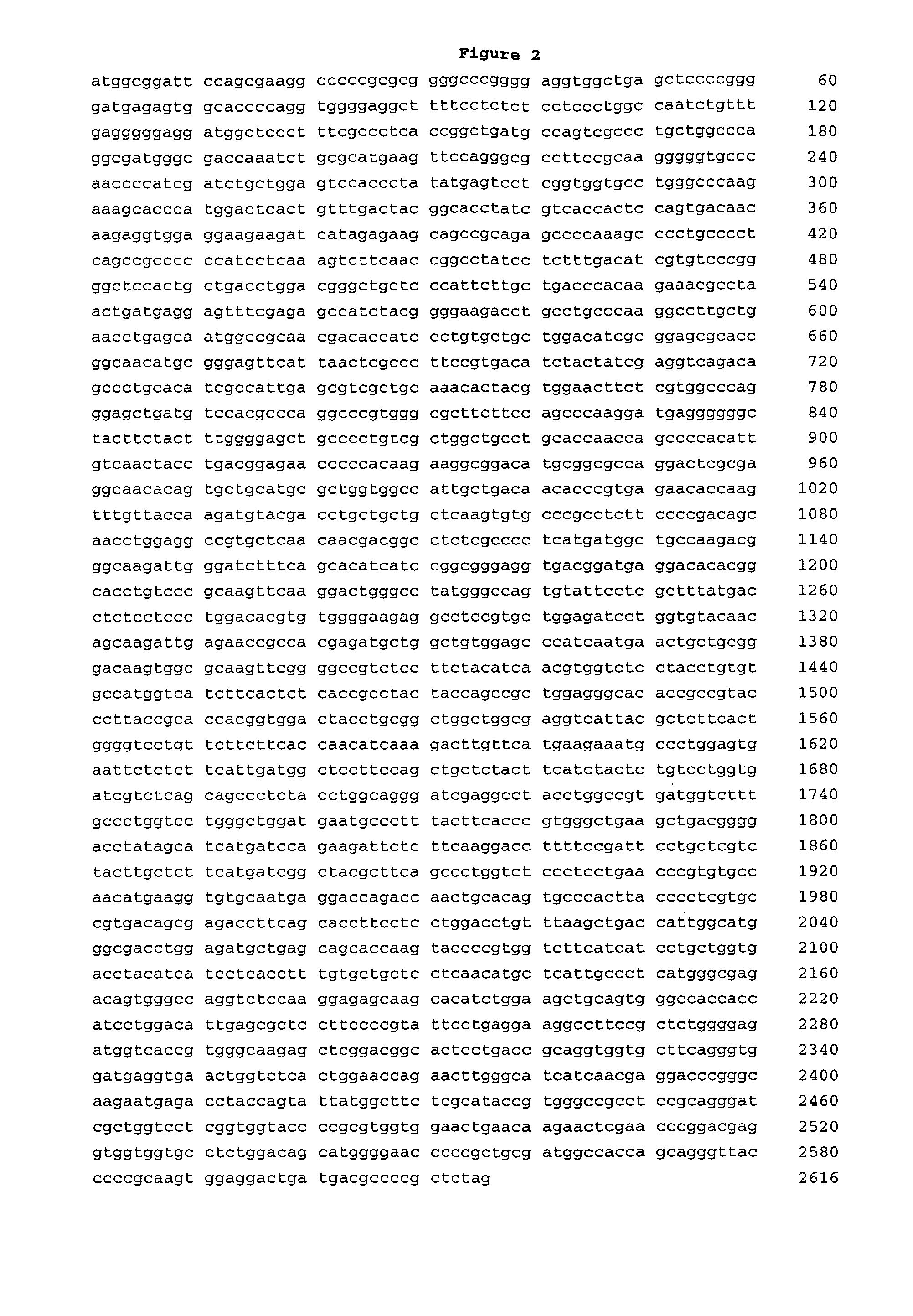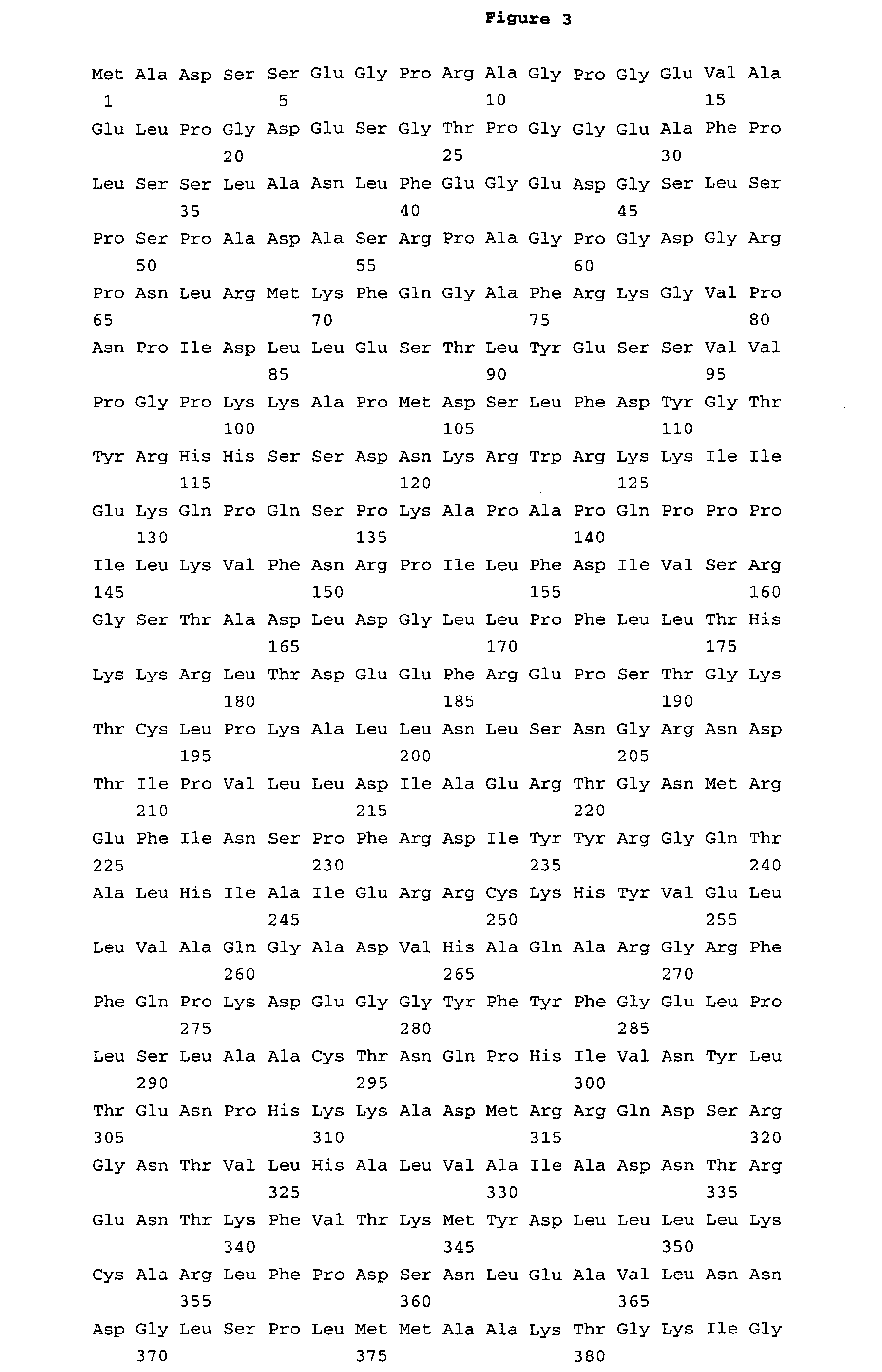Method for Activating Trpv4 Channel Receptors by Agonists
a trpv4 channel and receptor technology, applied in the direction of biocide, cardiovascular disorder, drug composition, etc., can solve the problems of normal matrix turnover and cartilage matrix degradation, and achieve the effect of reducing the amount of at least one type of matrix degrading enzyme, and reducing the amount of aggrecanase produced
- Summary
- Abstract
- Description
- Claims
- Application Information
AI Technical Summary
Benefits of technology
Problems solved by technology
Method used
Image
Examples
example 1
TRPV4 Channel Receptor is Expressed in Cartilage and Chondrocytes
[0366] Tissue and cell expression of human TRPV4 channel receptor was studied using TaqMan (Perkin Elmer) quantitative RT-PCR (Gibson et al., 1996) according to the manufacturer's instructions. TaqMan reactions were conducted using probes for human GAPDH, cyclophilin and human TRPV4 channel receptor. The human TRPV4 channel receptor probe consisted of:
5′-ATGAGGACCAGACCAACTGCA; and (SEQ ID NO:3)
5′-GGAGGAAGGTGCTGAAGGTCTC flanking primers and a (SEQ ID NO:4)
5′-CACTTACCCCTCGTGCCGTGACAG fluorogenic probe. (SEQ ID NO:5)
Data were analysed using the Power Macintosh software accompanying the ABI Prism™ 7700.
[0367] The data from a screen of body tissues, shown in Table 1, shows that human TRPV4 channel receptor is most prominently expressed in cartilage. A screen of primary and clonal cell cultures shows significant expression only in chondrocytes.
TABLE 1Relative mRNA expression in human tissues and cell-lines.ABCDEF...
example 2
TRPV4 Channel Receptor is Activated by 4α-phorbol-12,13 didecanoate (4α-PDD)
[0369] TRPV4 channel receptor cDNA was inserted into the expression vector pcDNA3.1 V5-His (Invitrogen, Carlsbad, Calif.). Wildtype HEK293 cells, or HEK293 cells transfected with the human TRPV4 channel receptor: pcDNA3.1 V5-His construct, or mock transfected cells, or bovine chondrocytes, were seeded into 96-well microtitre plates at 25,000 cells / well and cultured overnight. The cells were then incubated with 4 μM Fluo-3 (Fluo-3: Molecular Probes (Eugene, Oreg.)) for 2 hours at room temperature in the dark. Dye loaded cells were washed 4× with Tyrodes buffer: (NaCl, 145 mM; KCl, 2.5 mM; Hepes, 10 mM; Glucose, 10 mM; MgCl2, 1.2 mM; CaCl2, 1.5 mM), which also contained 0.2% BSA but not probenecid. Agonists and antagonists were also prepared in Tyrodes buffer. Cells were preincubated for 30 minutes with antagonist or buffer. Agonist addition and measurement of cytoplasmic calcium concentration was performed i...
example 3
Ca2+ Mobilization in Primary Chondrocytes (Human, Bovine, Rat)
[0372] TRPV4 channel receptor is a Ca2+ permeable, non-selective, ligand-gated cation channel. Ca2+ influx mediated through TRPV4 channel receptors was measured in human, rat and bovine chondrocytes using standard techniques in the art (e.g. employing a FlexStation manufactured by Molecular Devices (Sunnyvale, Calif.)). 4□-PDD, a known agonist to TRPV4 channel receptor, stimulated Ca2+ influx in chondrocytes from all three species, while PMA and capscaicin, known agonists to VR1, produced no change in Ca2+ influx. In addition, Ruthenium Red, a known inhibitor of 4□-PDD was found to reverse the effects of 4□-PDD on chondrocytes from all species and reduce Ca2+ influx down to baseline levels. (Watanabe, et al. (2002). J. Biol. Chem. 277(16): 13569-47051.).
PUM
| Property | Measurement | Unit |
|---|---|---|
| enantiomeric excess | aaaaa | aaaaa |
| enantiomeric excess | aaaaa | aaaaa |
| enantiomeric excess | aaaaa | aaaaa |
Abstract
Description
Claims
Application Information
 Login to View More
Login to View More - R&D
- Intellectual Property
- Life Sciences
- Materials
- Tech Scout
- Unparalleled Data Quality
- Higher Quality Content
- 60% Fewer Hallucinations
Browse by: Latest US Patents, China's latest patents, Technical Efficacy Thesaurus, Application Domain, Technology Topic, Popular Technical Reports.
© 2025 PatSnap. All rights reserved.Legal|Privacy policy|Modern Slavery Act Transparency Statement|Sitemap|About US| Contact US: help@patsnap.com



